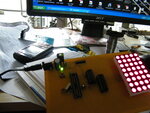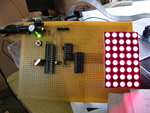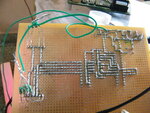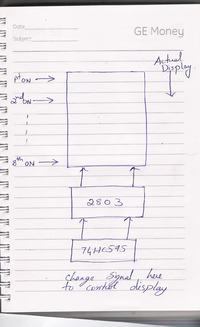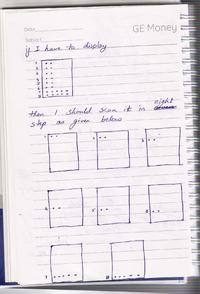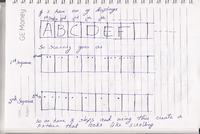alexan_e
Administrator
What king of multiplexing are you doing because the way that the circuit is wired I would expect to turn on
Row1 (and all columns of all display)
Row2
Row3
Row4
Row5
Row6
Row7
Row8
and then again from row 1
What you describe is
turn on all row/column of display 1
turn on all row/column of display 2
turn on all row/column of display 3
turn on all row/column of display 4
turn on all row/column of display 5
turn on all row/column of display 6
turn on all row/column of display 7
turn on all row/column of display 8
and then from start
This way you need a faster multiplexing rate 1/16 but less current, in the first way you need lower rate 1/8 and higher current, it is up to you but I don't understand why did you use the individual anode transistors if you are going to turn on/off all 8 of them at the same time(the second way)?
Alex
Row1 (and all columns of all display)
Row2
Row3
Row4
Row5
Row6
Row7
Row8
and then again from row 1
What you describe is
turn on all row/column of display 1
turn on all row/column of display 2
turn on all row/column of display 3
turn on all row/column of display 4
turn on all row/column of display 5
turn on all row/column of display 6
turn on all row/column of display 7
turn on all row/column of display 8
and then from start
This way you need a faster multiplexing rate 1/16 but less current, in the first way you need lower rate 1/8 and higher current, it is up to you but I don't understand why did you use the individual anode transistors if you are going to turn on/off all 8 of them at the same time(the second way)?
Alex
